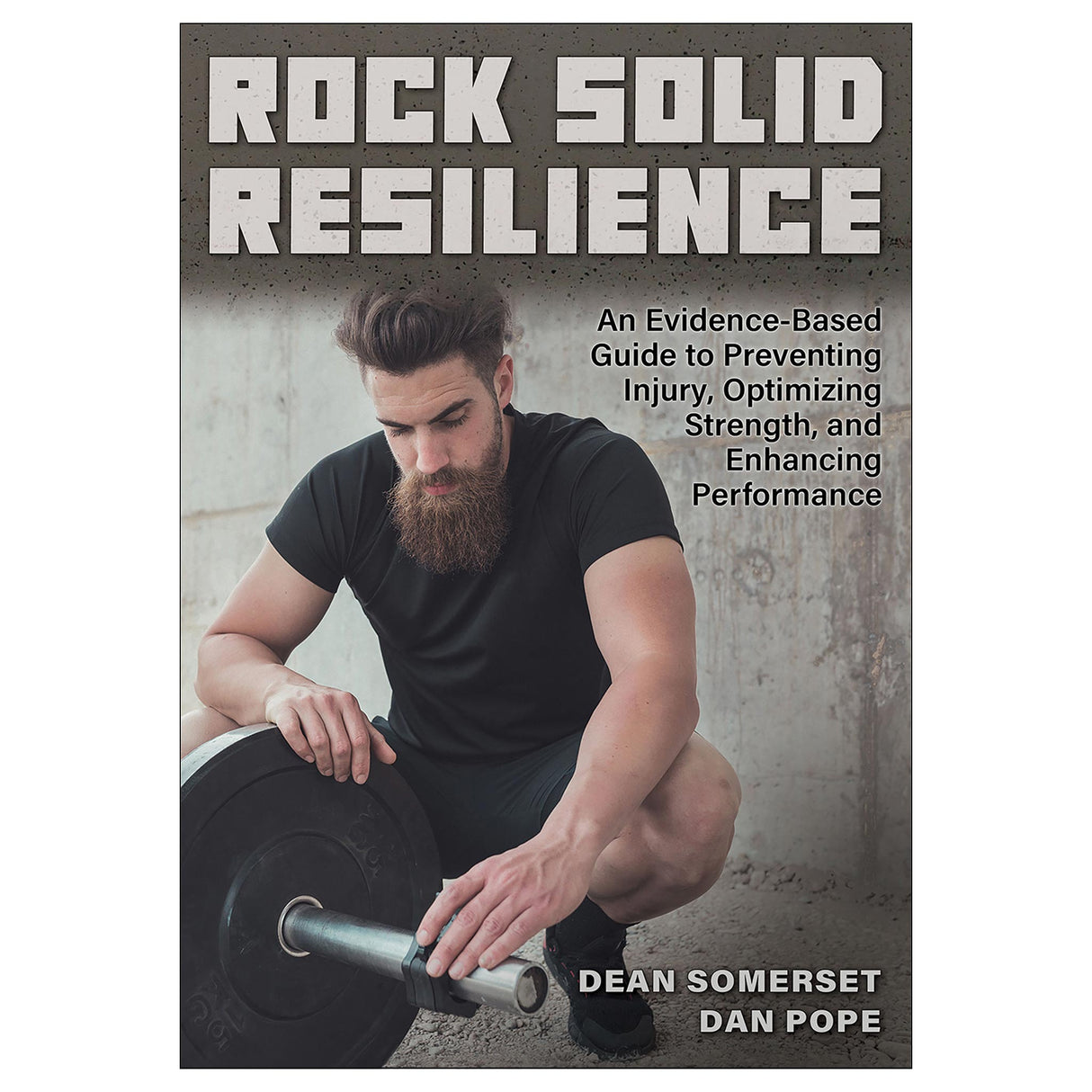Rock Solid Resilience
An Evidence-Based Guide to Preventing Injury, Optimizing Strength, and Enhancing Performance
Author: Dean Somerset, Dan Pope
$44.95 CAD
Pain is a poor coach, and the old adage “if it hurts, don’t do it” leaves a lot of questions: Why are you hurting? Should you keep going? Should you change your training entirely? Rock Solid Resilience teaches you how to build a resistance training program based on how you move, your stage of training, and what you’re capable of achieving—all so you can build the resilience to strength train for a lifetime.
A practical guide on how to train for longevity, Rock Solid Resilience equips you with knowledge about how injuries happen and what you can do to prevent them before they interrupt your training. You’ll learn to determine whether an injury can heal with rest, if adjustments can be made to safely keep going, or if you should consult a medical professional.
A self-assessment will help you ascertain your body type’s strengths and weaknesses so you can manage your training workload with the proper difficulty level and progression. Overviews of basic movements—including squats, deadlifts, pushes, and pulls—are complemented with variations to make them safer and effective for your specific needs:
- 6 variations on the squat with modification tips to protect your knees, back, and hips
- 10 variations on pressing and pulling movements that protect the shoulders, upper back, and chest
- 18 variations of core movements that allow you to build strength while progressing to other exercises
- 34 warm-ups, level-up, and accessory exercises that provide progressions and regressions to elevate training and avoid plateaus
Finally, you will learn to create a personalized program that prioritizes injury prevention as you work toward your goals at a pace that is challenging. Three sample workouts are provided to use as is or as examples to modify for your own program.
Rock Solid Resilience isn’t a program for a few weeks; it’s a guidebook you’ll use for the rest of your lifting life. Learn to listen to your body and train for decades to come.
Earn continuing education credits/units! A continuing education exam that uses this book is also available. It may be purchased separately or as part of a package that includes both the book and exam.
Audience
Individuals who regularly use resistance training as part of their workout regimen, including strength- and competition-based athletes as well as noncompetitors; also fitness and strength professionals using resistance training with their clients.Chapter 1. Preventing Injuries: What We Know
Current research into injury risk and prevention provides some interesting details. Knowing the risks and mechanisms of injury provides the opportunity to be proactive in preventing injury.
Chapter 2. Athlete Assessment: Identifying Limitations in Mobility and Gross Patterns
Proper mobility in the gym is a key factor in performance and longevity. Assessments identify strengths and weaknesses in mobility and core tension to guide lifters to safer, smoother movement.
Part II. Exercise Techniques and Execution
Chapter 3. Squat and Hinge Movements
We all know how to squat, don’t we? But how do you squat safety and effectively for your unique body structure?
Chapter 4. Pressing and Pulling Movements
All lifters have had to answer the question “How much can you bench?” Bench press, and its myriad variations, is ubiquitous in lifting. Learn to do it properly, and you can amaze when people ask the question.
Chapter 5. Core Movements
More than just crunches, core movements involve carries, braces, and rotational movements. A strong core is the best foundation for any lifter.
Part III. Programming Considerations
Chapter 6. Volume and Load
What is your goal? More muscle mass? Better strength? Learn to manipulate volume and load to reach your goals while mitigating injury risk.
Chapter 7. Level Up and Side Quest Accessory Approaches
Prevent training boredom and plateaus by customizing your program.
Chapter 8. Training With Common Injuries
All lifters need to understand pain and learn to navigate it. When should you push through? When should you modify? When should you seek help?
Chapter 9. Autoregulation
Autoregulation is a key process in which the health of the body is sustained as you progress through your program. Track the right information to make informed choices about when to modify your program, diet, sleep patterns, or other habits.
Chapter 10. Sample Programs
Want a program you can use right away? Want some inspiration to help you design or modify your own program? Pick from three sample programs—low everything, medium everything, or unrestricted—based on your results from the assessments in chapter 2.
—Lou Schuler, CSCS, Author of The New Rules of Lifting
“When I have a training question, Dan and Dean are the experts I turn to. Seeing them join forces on Rock Solid Resilience is fantastic. They’ve created an amazing resource.”
—Mike Reinold, Physical Therapist, Athletic Trainer, Strength and Conditioning Coach, and Cofounder of Champion Physical Therapy and Performance
“Many people like to call themselves an expert, but few have the expertise to back it up. Dean Somerset is an expert in every sense of the word. His Rock Solid Resilience is essential reading for anyone wanting to move and feel better.”
—Adam Bornstein, New York Times Best-Selling Author, Fitness and Nutrition Editor of Men’s Health and Women’s Health, and Editorial Director at LiveStrong.com
“Dean Somerset is among the best and most thoughtful trainers I have had the pleasure of encountering. His advice [in Rock Solid Resilience] is definitely rock solid.”
—James Fell, Author of On This Day in History Sh!t Went Down











